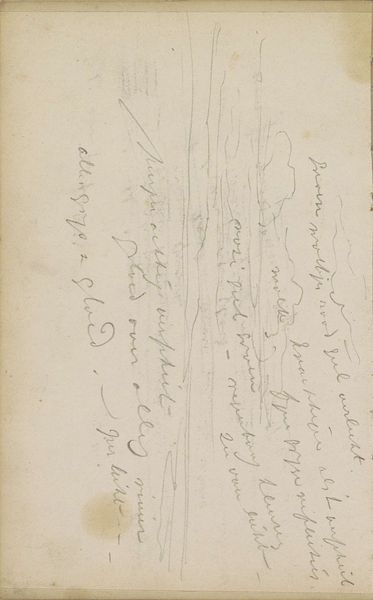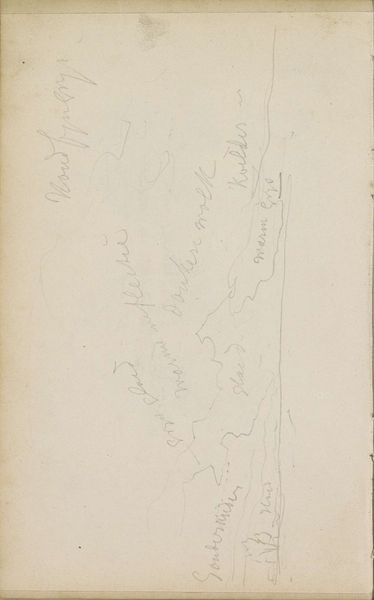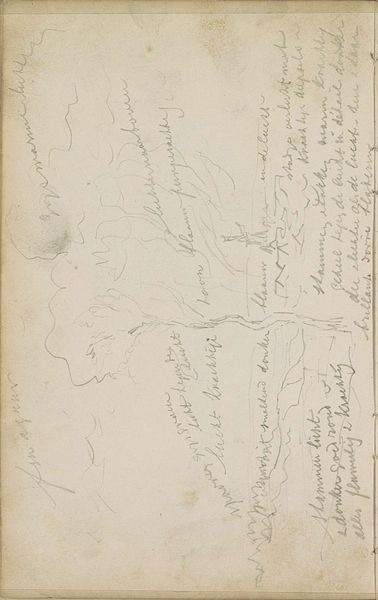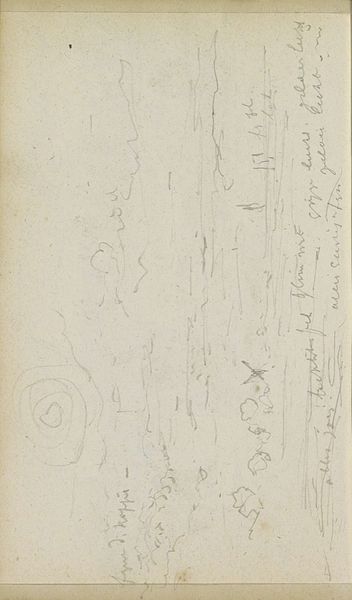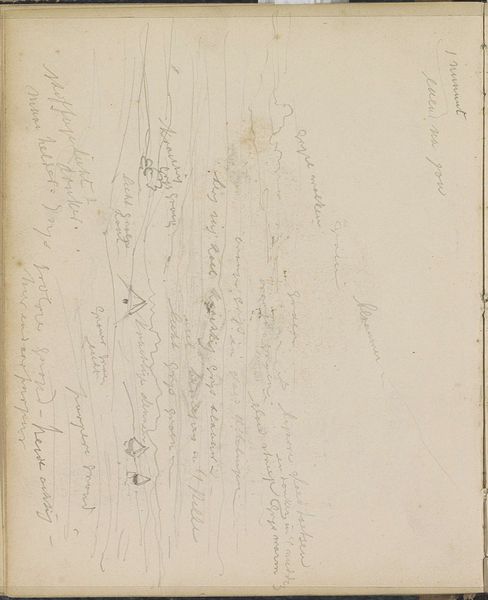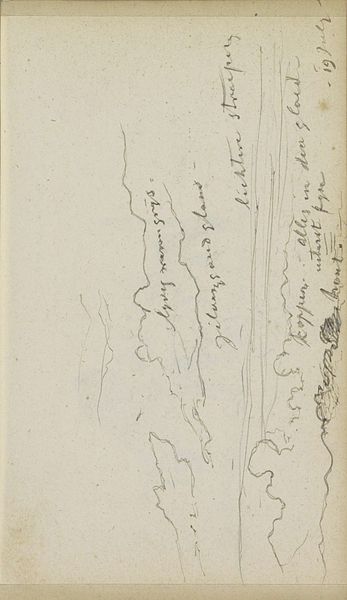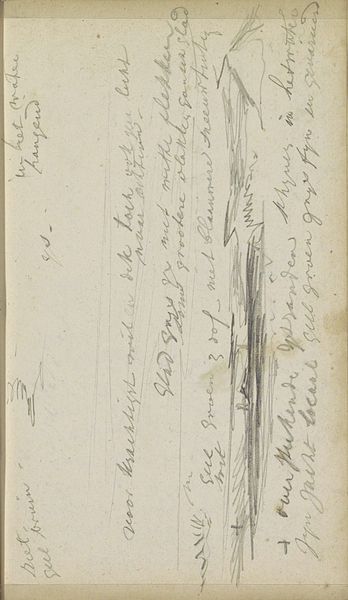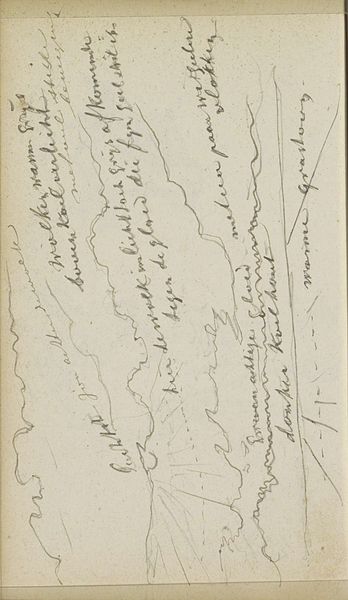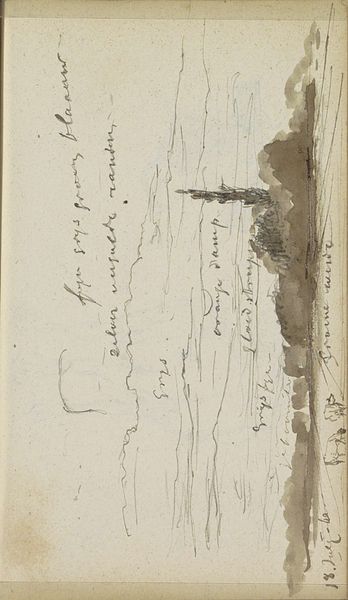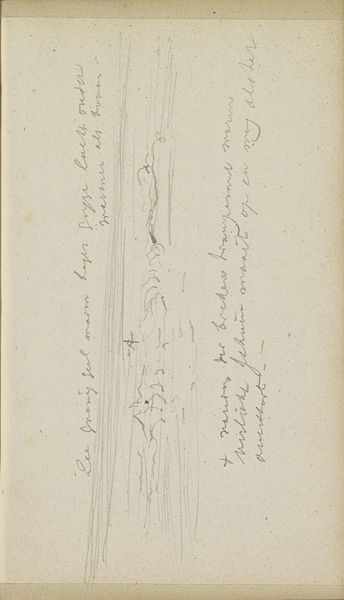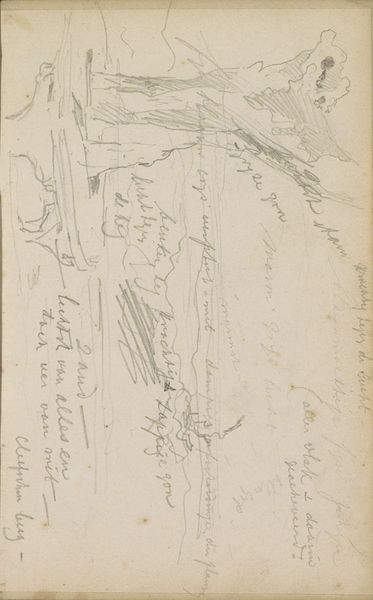
drawing, paper, pencil
#
tree
#
drawing
#
pencil sketch
#
landscape
#
paper
#
pencil
#
sketchbook drawing
#
watercolor
Copyright: Rijks Museum: Open Domain
Curator: Before us, we have a piece entitled "Landschap met bomen," or "Landscape with Trees," crafted by Johannes Tavenraat. The museum places its creation somewhere between 1839 and 1872. The medium appears to be primarily pencil on paper. Editor: There's a certain ephemeral quality here. Fleeting. The composition is incredibly sparse. Lightness seems to emanate from the paper itself. Curator: Consider that Tavenraat was likely working within a very specific landscape tradition, influenced perhaps by the social demands for picturesque and romantic depictions of nature. He may have been responding to pressures from the art market or patronage that valued certain types of landscape imagery, or he may have simply been trying to create landscape images for other uses within a material culture. It is useful to ask: What are the relations of production, here? Editor: Well, beyond that, there is an immediate visual experience. The almost uniform light grey tone across the surface generates an amazing pictorial unity. Look how the artist balances areas of precise detail of what look like hedges, in comparison to the blurred forms which could be a series of distant hills? It produces this real tension that enlivens the whole image. Curator: I wonder how the availability and cost of paper and pencils in the mid-19th century impacted his choices, both economically and aesthetically? Or how this drawing functioned as part of a larger social system for the production of art objects? I imagine its relative lightness would lend itself well to quick notes in preparation for more extensive and involved painting or printmaking endeavours. Editor: Those concerns seem secondary to me. The beauty of Tavenraat's economical means—a humble pencil and simple paper—achieves a remarkable evocation of depth and atmosphere. Semiotically speaking, the way those barely-there marks evoke tangible forms is quite compelling. Curator: The network of social forces surrounding artistic production in 19th-century Netherlands inevitably informed Tavenraat’s creation in subtle and overt ways, but seeing it today and understanding how artistic networks function is a key element to engaging with and contextualising works like these. Editor: Yes, understanding the broader socio-economic context can enrich one's viewing experience but, ultimately, what resonates is the sheer expressive power of simple, elegant lines. It transcends its material origins, it speaks to something elemental about our perception of landscape.
Comments
No comments
Be the first to comment and join the conversation on the ultimate creative platform.

